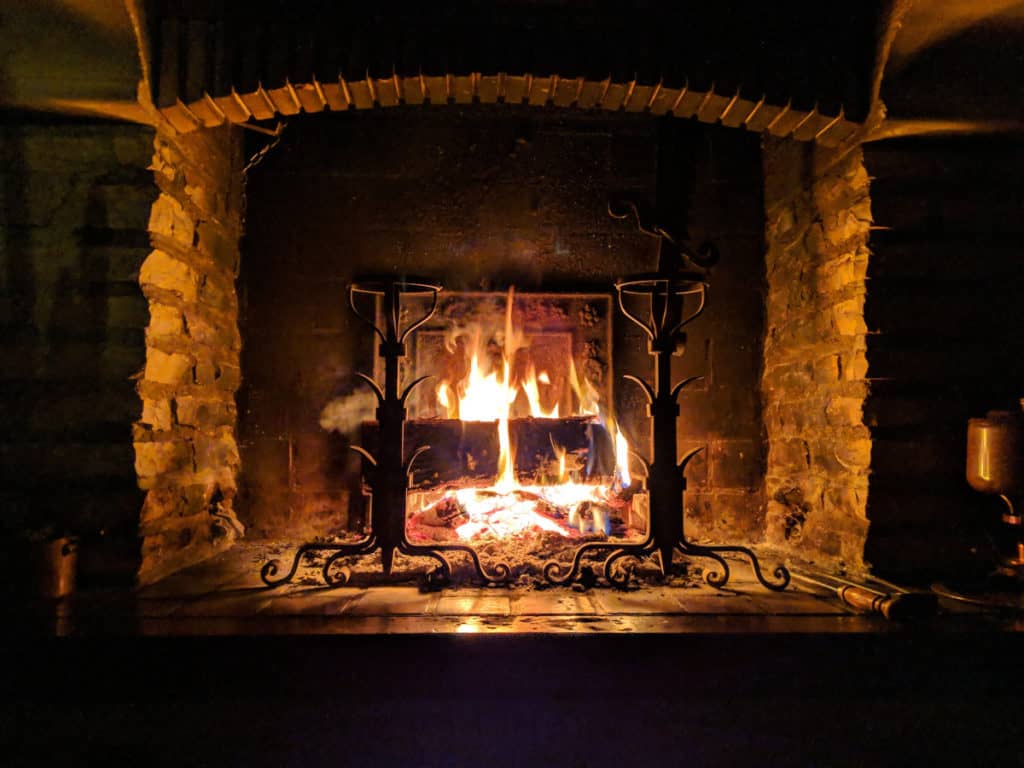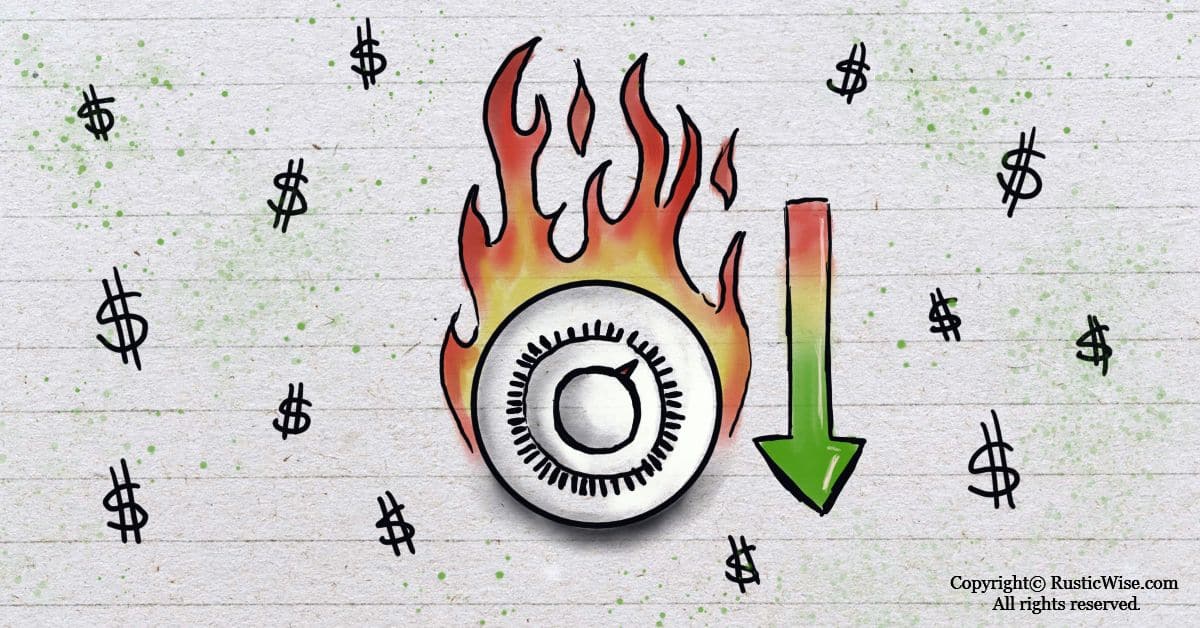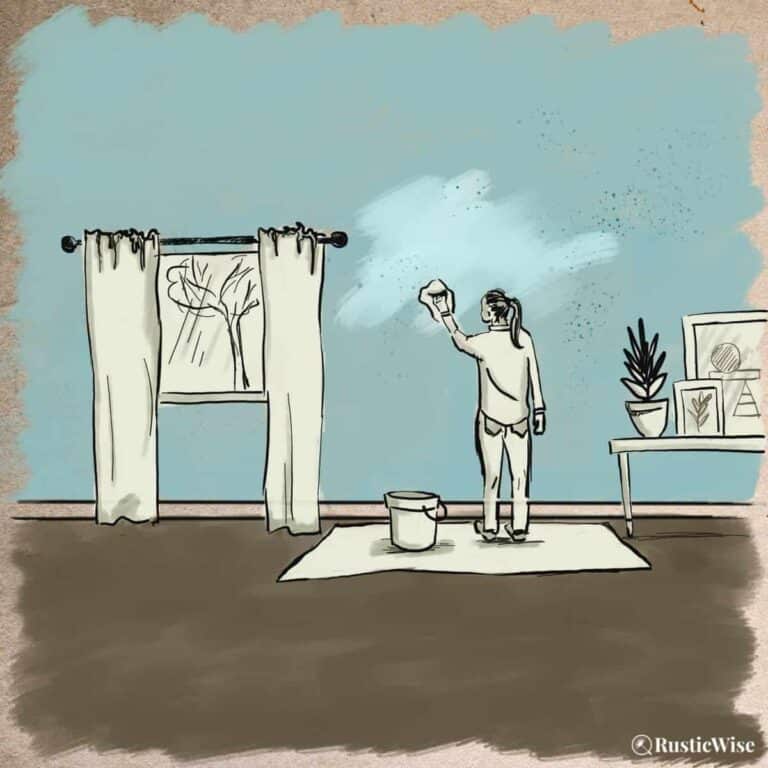17 Smart Ways To Save Money on Natural Gas Bill
Natural gas is a clean and efficient source of energy to heat your home, water, and gas-powered appliances. While having a warm, cozy home is nice— especially in the winter, cranking the thermostat quickly adds up. Luckily we’ve rounded up a few smart ways to save money on your natural gas bill.
Natural gas is one of the most commonly-used energy sources to heat your home in North America.
In the U.S., 58 percent of homes use natural gas as of 2015 according to the U.S. Energy Information Administration (EIA). States in the Northeast and Midwest have higher energy consumption than their counterparts in the West and South (due to varying space-heating demands).
In Canada, natural gas is mainly used in the western provinces and Ontario. Average natural gas usage in Canada is 88.4 gigajoules (GJ) per year, with Alberta being the highest at 100.3 GJ per year.
Space heating and water heating account for the two biggest chunks of energy consumption in households. If you’re wondering how to save money on natural gas bill, read on.
Why is my natural gas bill so high?
There are many reasons why your natural gas bill may be higher than expected.
Here are a few factors that affect your household’s natural gas bills:
- Home insulation: An older, or poorly insulated home results in more heat loss and higher bills.
- The size of your home: The larger your home is, the greater its space-heating demands.
- Climate and weather: Live in a cold area? Long winters and sub-zero temperatures contribute to greater natural gas consumption.
- Type of home: Do you live in a single-detached bungalow, or a two-storey home? Do you have vaulted ceilings? If you’re to compare a bungalow and two-storey home of equal square-footage, the two-storey home usually is more energy-efficient. Of course other factors come into play such as the level of insulation, but in general, this is the case.
- Natural gas appliances: Ovens, stoves, dryers—the list goes on. The number, usage, type, and efficiency of any natural gas appliances at home contribute to your monthly total cost.
- Number of people: Live by yourself, or with a tribe of eight? The number of household occupants plays a key role.
- Local gas rates: Local gas rates vary greatly depending on where you live. We touch more on this below. Check out the section, What is the average natural gas bill per month?
- Home efficiency: Old, drafty windows vs. new triple-pane window. Solid home insulation vs. cracks and drafts everywhere.
Tip: If you noticed an unusually high spike in your monthly natural gas bill, it’s a good idea to check for gas leaks. Signs of a possible gas leak include dead houseplants, the smell of rotten eggs, and a hissing sound coming from a gas pipe. Physical symptoms include dizziness, nausea, and headaches. Evacuate your home immediately if you suspect a gas leak.
17 Smart ways to save money on natural gas bill
By doing a few things around the house and practicing good energy habits, you’ll reap the rewards of energy savings.
1) Turn down the thermostat
Every degree lower makes a difference. To start slowly, lower your thermostat by one degree at a time day by day. This lets your body gradually acclimatize to the (slightly) cooler temperature.
Nighttime is a good time to do this. Besides getting a better sleep from slightly cooler temperatures, you can always add an extra blanket if needed.
According to Energy Saver, you can save between 5-15 percent every year on your heating bill if you set your thermostat lower by 10-15 degrees for a timeframe of 8 hours.
2) Turn down the hot water heater
Turning down the thermostat of your hot water heater leads to increased savings. The U.S. Department of Energy (DOE) recommends a temperature of 120 degrees Fahrenheit (49 degrees Celsius). Most thermostats are programmed to 140 degrees Fahrenheit (60 degrees Celsius).
The DOE says for every 10 degree reduction in temperature, you’ll save between 3-5 percent on your water heating costs.
Read more about saving money by turning down the hot water heater.
3) Insulate your home in these key areas
Improve your home’s insulation. Focus on key areas to reduce heat loss including the attic, windows and doors, and any drafty areas.
4) Say no to crack(s)
Seal any cracks, gaps, and drafts with spray foam as needed. Ensure the weather strips around doors and windows are in good condition.
5) Insulate hot water heater
Keep heat where it belongs by insulating your hot water pipes, and adding an insulating layer to the heater.
6) Clean furnace filters regularly
Over time your furnace filters get bogged down by household dirt, dust, and other debris making your furnace less efficient. Ensure you clean it regularly as recommended by the manufacturer.
7) Clean and clear areas around air registers, radiators, and heaters
Ensure air is able to circulate freely around your home by leaving adequate space around any air registers, heat radiators, and other types of heaters. Remove any large bulky furniture, rugs, or drapes blocking the way. Give the registers and radiators a quick wipe with a clean cloth while you’re at it.

8) Reduce fireplace use
Whether you have a gas-powered fireplace or a wood-burning fireplace, you can reduce natural gas consumption. While gas fireplaces use energy, wood-burning fireplaces let cold air in causing your furnace to work harder to warm up the house.
9) Adjust your ceiling fan
The direction your ceiling fan rotates makes a difference in circulating air. During the winter, a clockwise direction helps to push warm air around the house more efficiently. In the summer months, the fan should rotate counter-clockwise.
10) Don’t leave other fans running
From bathroom fans to kitchen exhaust fans, it’s important to turn these off once they’ve done their job. Aim to turn these off within 20 minutes or so.
11) Open sesame
During the chilly winter months, take advantage of natural sunlight from south-facing windows during the day by opening drapes and shades. Draw the curtains at night to keep the cold out. Also keep any drapes or shades drawn during the day if they receive no sunlight.
12) Reflect the heat
This is a good tip from Energy Saver. Use a heat-resistant radiator reflector to prevent heat from escaping from exterior walls. These are usually made of a thin layer of foil and help reflect heat back into the home. Place your radiator reflector against the wall next to your heater.
13) Bundle up or use a small heater
Before cranking up the thermostat, consider adding an extra layer (that’s what all those cozy sweaters are for!), and a pair of warm socks.
Or, if you’re spending the majority of your time staying in one room, consider using a small heater to heat up the room.
The following tips require an investment upfront:
14) Install a Smart Thermostat
A Smart, or programmable thermostat cuts down on energy consumption by setting varied temperatures throughout the day. If nobody is home during the day for example, you can set the thermostat lower. You can also program the temperature to drop by several degrees at night.
15) Invest in ENERGY STAR appliances
Newer, higher-efficiency appliances may require a larger upfront investment, but you’ll save in the long run. Did you know that an ENERGY STAR dryer uses 20 percent less energy than conventional models.
16) Upgrade your window coverings
If it’s time to replace your window coverings, consider upgrading to insulated cellular shades. According to Energy Saver, cellular shades reduce heat loss by 40 percent or more which results in roughly 20 percent energy savings.
17) Upgrade windows
Roughly 30 percent of your home’s heat escapes through the windows. Older windows in particular, are poor at retaining heat. Consider upgrading your windows.
Natural Resources Canada estimates that single-glazed windows lose roughly 10-20 times more heat than a properly insulated wall of the same size. Windows with a double glaze help cut heat loss in half.
What is the average natural gas bill per month?
The short answer is, it really depends. Gas rates vary depending on your geographic location, size of your home, number of gas appliances, and more (see above, Why is my natural gas bill so high?).
The best way to determine what the average natural gas bill is for your home is to ask the previous owner or landlord.
Short of that, there’s a Residential Energy Calculator courtesy of Energy Solutions Center (ESC).
Tip: Check out the Residential Energy Calculator here. It spits out an estimate based on your location within Canada or the U.S. It also accounts for the size of your home, number of occupants, number of loads of laundry and other appliances. It breaks it down by water heating and space heating costs.
There’s a study by WalletHub that breaks down the energy costs of each state based on information from the U.S. Energy Information Administration.
According to the numbers, Hawaii and Florida have the highest natural gas prices. Compare this with North Dakota and Idaho with the lowest natural gas prices.
However, pricing isn’t everything. Gas consumption plays a role too.
The states with the highest natural gas consumption per consumer are Illinois and Michigan. On the flip side Hawaii and Florida have the lowest natural gas consumption per person.
Monthly gas bills vary greatly depending on location from $68/month in New York to only $4/month in Florida.
What’s the best temperature to set a thermostat to in the winter?
A good anytime temperature to aim for is 68 degrees Fahrenheit (20 degrees Celsius).
Direct Energy says a temperature of 72 degrees Fahrenheit (22 degrees Celsius) is okay if someone is home during the day. At night, set the temperature to between 62-66 degrees Fahrenheit (17-19 degrees Celsius).
New to making soap? 🧼❓
👉We have a fantastic overview on the whole soapmaking process here: read our Timeless Guide To Soapmaking.
If you would like to see our soapmaking posts organized by topic type, see our Soapmaking Collection.
Would you like more timeless tips via email?
Fun tips to help you live an independent, self-sustaining lifestyle. Opt-out at any time.


References:
- U.S. Energy Information Administration (EIA), Use of energy explained, https://www.eia.gov/energyexplained/use-of-energy/homes.php. Accessed December 2020.
- Canada Energy Regulator, What is in a Canadian residential natural gas bill?, https://www.cer-rec.gc.ca/en/data-analysis/energy-commodities/natural-gas/report/canadian-residential-natural-gasbill/index.html. Accessed December 2020.
- Grist, Is a one-story house more energy-efficient?, https://grist.org/living/which-is-more-efficient-a-one-story-house-or-a-multi-story/. Accessed December 2020.
- Energy Saver, Program Your Thermostat for Fall and Winter Savings, https://www.energy.gov/energysaver/articles/program-your-thermostat-fall-and-winter-savings. Accessed December 2020.
- Energy Saver, Home Heating Systems, https://www.energy.gov/energysaver/heat-and-cool/home-heating-systems. Accessed December 2020.
- Energy Saver, Laundry, https://www.energy.gov/energysaver/appliances-and-electronics/laundry#:~:text=Laundry%20Tips,load%20from%20lighter%2Dweight%20clothes. Accessed December 2020.
- Energy Saver, Energy Efficient Window Attachments, https://www.energy.gov/energysaver/energy-efficient-window-attachments. Accessed December 2020.
- Natural Resources Canada, Keeping The Heat In – Chapter 8: Upgrading windows and doors, https://www.nrcan.gc.ca/energy-efficiency/energy-efficiency-homes/how-can-i-make-my-home-more-ener/keeping-heat/keeping-heat-chapter-8-upgrading-windows-and-doors/15643. Accessed December 2020.
- Energy Solutions Center (ESC), Residential Energy Calculator, https://esc.energydepot.com/user-information/home. Accessed December 2020.
- McCann, Adam (14 July 2020). “Most & Least Energy-Expensive States,” WalletHub. Accessed December 2020.
- Direct Energy, Recommended Thermostat Settings in the Winter, https://www.directenergy.com/learning-center/recommended-thermostat-settings-winter. Accessed December 2020.

Author: Josh Tesolin
Josh is co-founder of RusticWise. When he’s not tinkering in the garden, or fixing something around the house, you can find him working on a vast array of random side projects.









